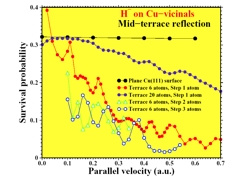
Figure 1: Figure 1: Survival probabilities of H- as a function
of its parallel velocity of incidence near plane and vicinal Cu(111) surfaces.
Resonant charge transfer in the scattering of hydrogen anions from vicinal metal surfaces
Himadri S. Chakraborty, Thomas Niederhausen, Uwe Thumm
J R. Macdonald Laboratory, Kansas State University, Manhattan, Kansas 66506 USA
The study of interactions of atomic or molecular ions with plane and nano-structured metal or semiconductor surfaces is relevant for both, our understanding of basic surface chemistry and morphology and for applications, such as etching, semiconductor miniaturization, and catalysis. Direct numerical solution of the time-dependent Schrödinger equation has been found to be a comprehensive tool to investigate single-electron ion-surface interaction processes, namely, the resonant charge transfer (RCT) between a negative hydrogen ion and plane Cu [1], Ag [2], and Pd [3] surfaces of various symmetries. The competitive role of the Shockley surface state and image states during RCT is found to be crucial for the ion survival.
We recently applied this methodology to investigate the RCT - influenced survival of a beam of hydrogen anions scattered from vicinal Cu surfaces. We model the component of the surface potential normal to the surface as in Refs. [1-3]. However, the parallel component of the surface potential is constructed within a Kronig-Penny type model. The final ion-survival probability is calculated for a fixed normal component of the ion velocity (0.02 a.u.) and for a range of parallel velocities.
Figure 1 shows the ion survival probability when the ion is incident at the middle of two vicinal steps and reflects specularly. The survival of the ion off vicinal surfaces shows oscillatory structures as a function of the ion parallel velocity as opposed to the steady result for the plane Cu surface, whose electronic motion is assumed free along the parallel direction. The number of vicinal terraces the ion interacts with increases with the parallel velocity when the normal velocity is held constant. This results in an increased electron-loss of the anion, i.e., the decrease in its average survival probability. The background decay of the ion survival probability as a function of its parallel velocity in front of vicinal surfaces shows this effect. However, going from a 6a long terrace to a 20a long terrace (a being the lattice constant), this effect weakens, since the longer the terrace size the more similar the surface becomes to the corresponding plane surface geometry. The modification of the oscillatory structure can also be noted with the alteration of the step height.

References:
[1] Chakraborty et al., Phys. Rev. A 70, 052903 (2004).
[2] Chakraborty et al., Phys. Rev. A 69, 052901 (2004).
[3] Chakraborty et al., Nucl. Instr. Meth. B, in print.
This work was supported by the
Chemical Sciences, Geosciences and Biosciences Division,
Office of Basic Energy Sciences,
Office of Science,
U.S. Department of Energy.
Submitted to ICPEAC, July 2005 in Rosario, Argentina.
This abstract is also available in Adobe Acrobat format.
| Return to do another abstract search of all our holdings. |
|
|